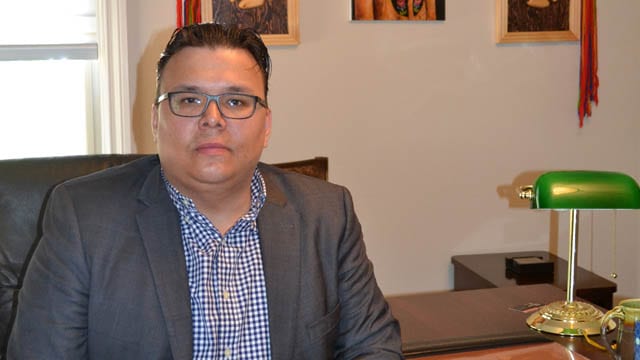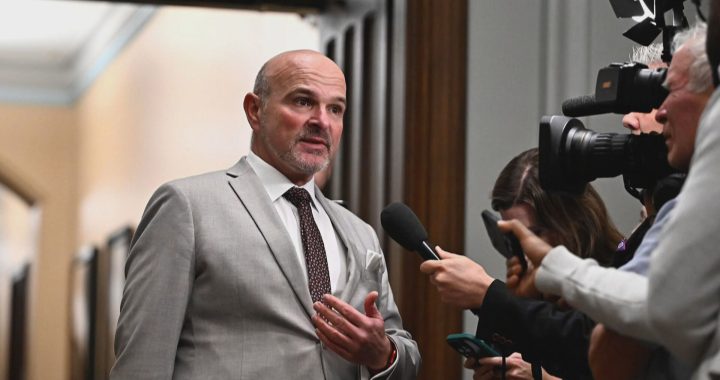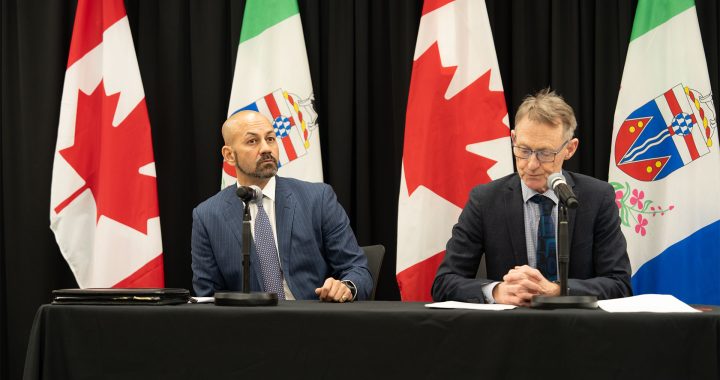(The administrative offices in the Fort McKay Metis community that has 90 members and 800 hectares of land in Alberta. Photo: Brandi Morin/APTN)
Brandi Morin
APTN National News
FORT MCKAY METIS COMMUNITY — New houses and new trucks greet you upon arrival at the Fort McKay Metis community in northern Alberta. It is a small place, a mere dot on the map, located north of Fort McMurray, between the tar sands and next to Fort McKay First Nation.
The Fort McKay Metis is a unique community that was established during the fur trade here in the 1900’s.
The people here have close ties with the local First Nation as well as mixed ancestry including French, English, Cree, Dene and Metis.
Encompassing 800 hectares of land and having just under 90 members. it is the only Metis community that was able to negotiate their lands away from the Alberta government.
It is surrounded by industrial development, mainly tar sands activity. The tar sands have had a large impact on the local environment and traditional territories of the Metis.
Most say that for a time, they were ignored when it came to consultation with industry.
The Metis here, like their First Nation neighbours, at one time tried to stop industry from encroaching on their territories with little success.

“It felt like everything was rubber stamped. Like our concerns were an afterthought,” said President Ron Quintal.
That is until Fort McKay Chief Jim Boucher stepped up and insisted industry also consult with the Metis, he said.
“In Alberta there is no policy or legislation in place that a proponent has to talk to a Metis organization while they talk to the First Nations about the exact same impacts. But we have been able to negotiate deals with industry,” said Quintal.
They are prospering alongside Fort McKay First Nation. The community doesn’t receive any government money and is completely self-reliant via business agreements with industry.
Through profits earned from the Fort McKay Metis Group LTD., several initiatives are funded like a beautification program, park building, housing, post-secondary scholarships and local infrastructure.
“I’m about the success of my community and doing the best I can to ensure my community is successful,” said Quintal, which he added, includes mitigating environmental concerns.
“We work with industry. We’ve gone this far and we use our best judgement to ensure industry and government are working sustainably.”
Now, Quintal is asking for the ability to hit the brakes on further development. The current down turn in oil prices is an opportunity to look at ways to diversify the economy.
“Everyone is tapping on their brakes and people are taking a step back in terms of how aggressive they want to be in their developments. It’s a sobering second look- it gives the community the chance to catch our breath. If oil was to turn the key off tomorrow and go home this community would take at least 20 years to go back to the lifestyle that it had prior because everything around our community, in terms of our traditional territory, is gone.”
Quintal said he’s terrified by what he’s witnessed over the years with the land being eaten up and polluted by industry.
“The fact is we are putting controls in place. We have three air monitoring systems in the community at all times. Everything is under scrutiny. Do I think it’s all industry’s fault? There’s a good case against that.”
But, it’s not just environmental impacts that came with the economic boom train, social issues add additional challenges.
“Many here are living with addictions. Because the money is everywhere. We have 18 year old kids, graduating high school with opportunity. They go to work and drive heavy haulers and suddenly make $100,000 a year.”
Quintal acknowledges that time is running out. They have money now, but the land is being destroyed and they may not have a place to call home in the near future.
They are already planning ahead however, given the circumstances, to create a new vision for the coming generations.
Recognizing the dilemma the Fort McKay Metis is buying land in Isle La Crosse Saskatchewan- an area with a high density of Metis people. It will be a place for the people to go to if Fort McKay ends up being swallowed up by industry.
“We don’t have any sanctuaries to go to, but we’re buying lots to build some cabins and a lodge to be able to take our people away if they want to. There they can fish, hunt, pick berries and go back to nature,” said Quintal.
Regardless of the challenges before them, the people will continue to take advantage of economic opportunities while they still can, said Quintal.

“What we need in Alberta is a policy that will enable the Metis the ability to be more engaged…That’s not to say we want to stop industry. We want to use the best technology possible, to know where you’re (industry) going to be working within our traditional territory. And we want the opportunity to continue make money off of the projects.”
@songstress28









